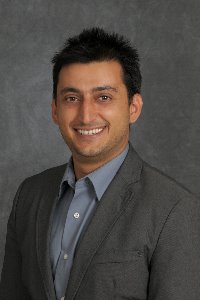One Bridge at a Time: Bridging the Digital Divide for the Well-Being of Aging Populations in Smart and Connected Communities
To achieve truly smart and connected communities and improve the quality of life for citizens, it is crucial to understand not only the needs of all community segments but also the devices necessary to respond to those needs in order to improve quality of life and provide mobility and access. Community characteristics (e.g., demographics, socioeconomic factors including income level) and urban density (i.e., urban vs. rural) influence the required services and necessary connectedness for a community's economic, social and physical health. Smart-ness and connected-ness of communities rely heavily on technological developments and tools which are mostly emergent in nature, evolve rapidly, and often disrupt the existing practices. In addition, for the aging population, mobility restrictions (physical, cognitive, and/or perceptual) can deter movement, and result in individuals' loss of accessibility to crucial services (i.e., health services) and activities needed for a good quality of life (i.e., meeting with friends). In case of such mobility restrictions, the movement of services (and goods) to the individuals should be established for their well-being. Smart and Connected Communities (S&CC) have such a significant potential to help solve these problems and improve the lives of the aging population through satisfying their crucial needs in an efficient manner. However, the aging population also faces physical, cognitive and economic challenges to adopting technologies which would enable the aforementioned improvements in their lives and lead to comprehensive implementation of S&CC strategies. The objective of this Research Coordination Network (RCN) is to develop a collaborative, multidisciplinary research platform and to study the relationship between S&CC and the built environment (e.g., varying urban densities and demographics), centered on creating S&CC that incorporate the aging population to improve the welfare of growing aging population in the U.S.
The RCN will focus on three thrusts related to the aging population: 1) transportation, 2) public safety/emergency services, and 3) housing. These focus areas will all serve the RCN's main objective of maintaining mobility and access to services for the aging population. The RCN advances the S&CC research by (a) integrating and coordinating research on S&CC across the social sciences and engineering, (b) connecting national and international researchers and community organizations, who otherwise carry out studies in their respective fields with limited interaction, and tackling S&CC challenges within a network which is true to the interdisciplinary nature of S&CC, (c) introducing the discussion of urban density impacts on S&CC with a geographically diverse group of institutions and communities, which can be scalable to rural locations, (d) identifying the mobility challenges and needs with the current transportation options in both urban and rural older communities, (e) incorporating the relatively ignored disadvantaged populations, both in urban and rural settings, into the S&CC context and providing a comprehensive S&CC framework which serves the population as a whole, (f) approaching the concept of the digital divide in a comprehensive manner under S&CC, (g) creating a collaborative platform to discuss, document and share theoretical and practical approaches as well as necessary data sources for the aging population, and (h) establishing avenues to investigate S&CC implementations for the aging population on a national and international scale, and informing policy makers of the scalability and transferability of successful practices. The RCN has a unique composition of researchers and community organizations from various localities. This special mix of backgrounds creates a fertile interdisciplinary environment which has the potential to advance S&CC research as a whole along multiple frontiers. The young researchers, including not only undergraduate and graduate students but also high school students, who are nurtured within the multidisciplinary RCN environment, are expected to be the future leaders in S&CC research. The RCN's scope of varying national urban density, as well as the international reach, lead to a high potential to inform policy makers and city governments with the best practices, as well as best strategies for the adoption, education and integration with respect to the emerging S&CC technologies.
-
Performance PeriodSeptember 2017 - August 2022
-
SUNY at Stony Brook
-
Award Number1737483
-
 Lead PIMustafa Anil Yazici
Lead PIMustafa Anil Yazici -
Co-PIJacqueline Mondros
-
Co-PIEren Ozguven
-
Co-PIDavid Eby
-
Co-PIWalter Boot
Dr. Yazici's research interests can be broadly classified within two domains: transportation networks and mobility. His research is driven by questions and methodologies that are 1) networks/systems oriented, 2) data informed with particular emphasis on uncertainties, and 3) geared towards providing implementable planning and policy outcomes. Dr. Yazici's transportation networks research addresses the need for models and metrics to assess the performance of transportation networks, as well as the safety, and economic and societal impacts related to transportation network disruptions. In his mobility research, Dr. Yazici addresses the reliability and safety of day-to-day transportation activities which have important economic, equity and quality of life implications. As technology transforms the transportation industry, Dr. Yazici has incorporated the emerging technologies into his research both as the sources of his big data research and as the driving force for his smart cities related research. Dr. Yazici's research at Stony Brook Civil Engineering has been funded by both Federal and State agencies such as National Science Foundation (NSF), New York State and City Departments of Transportation (NYSDOT and NYCDOT), New York State Energy Research and Development Authority (NYSERDA).